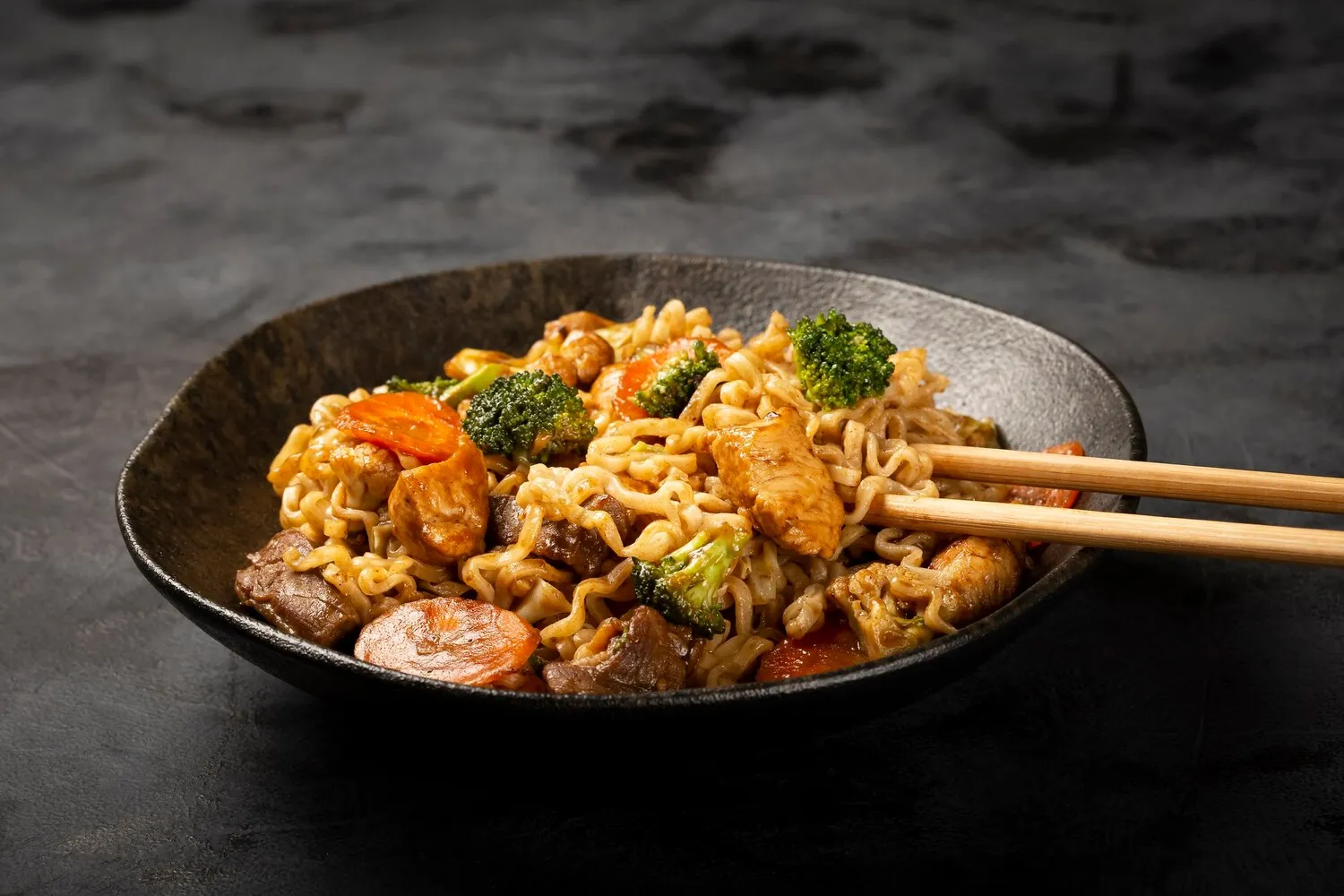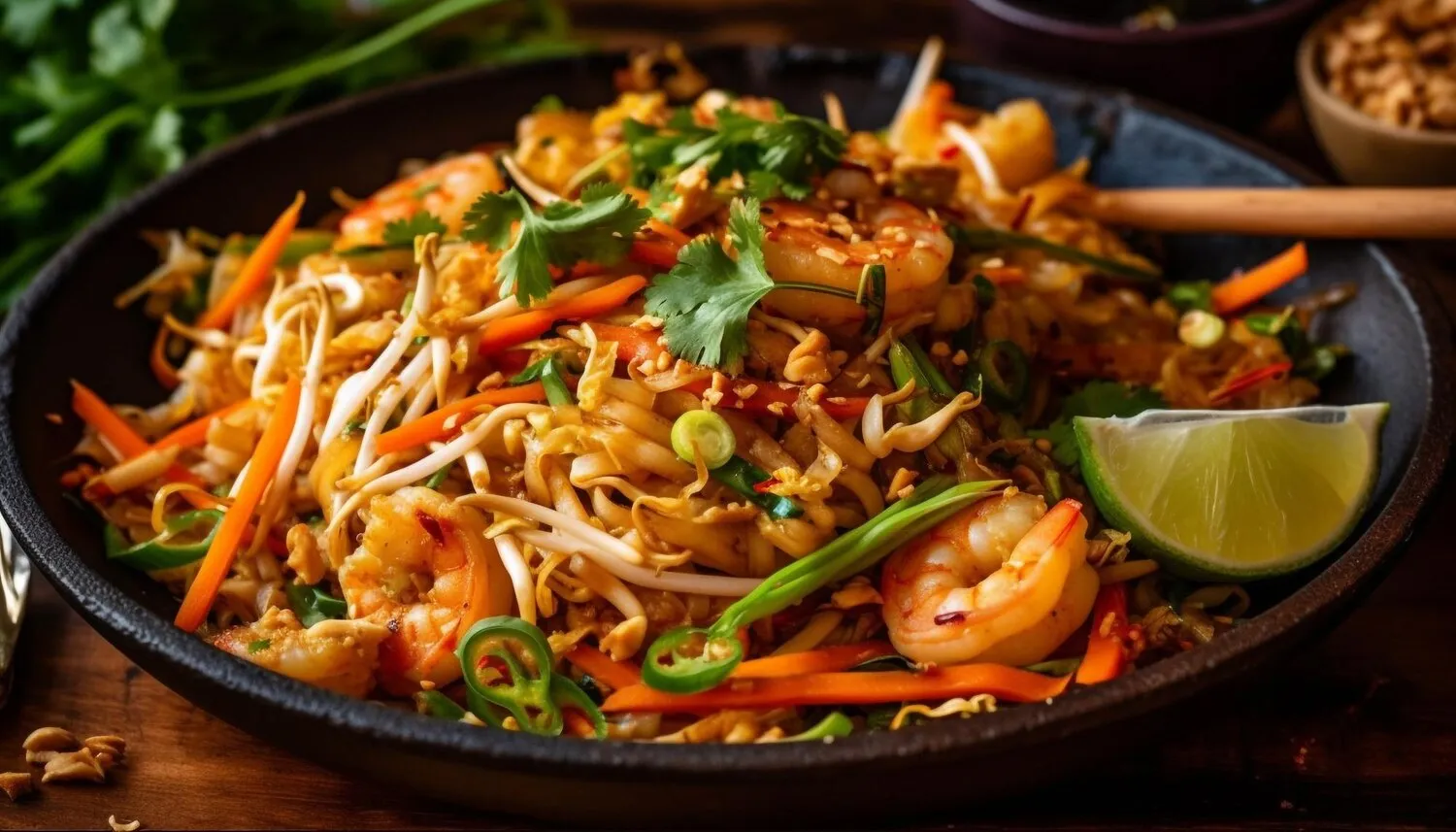
Yakissoba
Stir-fried noodles with vegetables and meat (chicken or beef).
Nutrition Facts
* The % Daily Value (DV) tells you how much a nutrient in a serving of food contributes to a daily diet. 2,000 calories a day is used for general nutrition advice.
Restaurante Nippon House
Yakisoba's origins can be traced back to Chinese chow mein, introduced to Japan sometime in the early 20th century. It evolved into a distinct dish utilizing readily available Japanese ingredients and flavors, becoming a popular and affordable street food.
Yakisoba is deeply embedded in Japanese popular culture, especially as a festival food and a common dish served at home.
Street Food Staple
Yakisoba is a ubiquitous sight at Japanese festivals (matsuri) and street fairs, often cooked on large teppanyaki grills and sold by street vendors. Its affordability and satisfying flavor make it a popular choice.
Home Cooking Favorite
Yakisoba is also frequently prepared at home as a quick and easy meal. Pre-packaged yakisoba noodles and sauce are readily available in supermarkets, making it a convenient option for busy families.
Pan Yakisoba
In some regions, yakisoba is even served inside a sliced bread roll (pan), creating 'yakisoba-pan,' another popular street food and lunch option.
Yakisoba offers a savory and slightly sweet umami flavor profile, balanced by the freshness of vegetables and the richness of meat.
The primary flavor comes from the yakisoba sauce, a blend of Worcestershire sauce, soy sauce, oyster sauce, and often ketchup or other sweet and savory elements. This sauce coats the stir-fried wheat noodles, vegetables (cabbage, carrots, onions are common), and meat (typically pork, chicken, or beef). Additional flavors are added through garnishes like aonori (dried seaweed flakes), beni shoga (pickled ginger), and katsuobushi (dried bonito flakes).
Noodle Preparation
Pre-cooking or briefly steaming the yakisoba noodles before stir-frying helps to prevent them from sticking together and ensures they cook evenly. This also allows them to absorb the sauce better.
High Heat Cooking
Stir-frying at high heat is essential for achieving the desired smoky flavor and preventing the vegetables from becoming soggy. Use a wok or large skillet for optimal results.
Sauce Timing
Add the yakisoba sauce towards the end of the cooking process, once the noodles and vegetables are nearly done. This prevents the sauce from burning and allows it to coat the ingredients evenly.
Don't overcrowd the pan
Cook the yakisoba in batches to ensure the noodles and vegetables cook evenly and get a good sear.
Explore additional Noodles dishes and restaurants
Explore NoodlesDiscover top dining spots and culinary experiences in Castanhal.
Explore CastanhalLearn more about the food culture, restaurant scene, and culinary heritage of Brazil.
Explore Brazil
